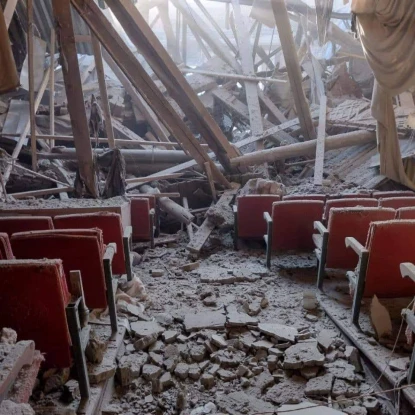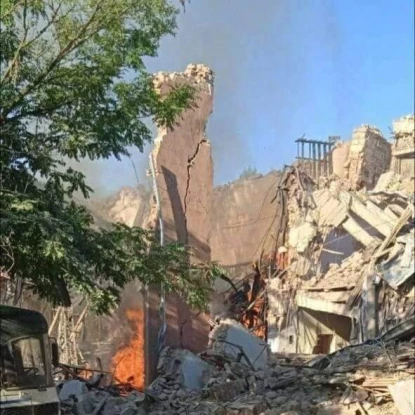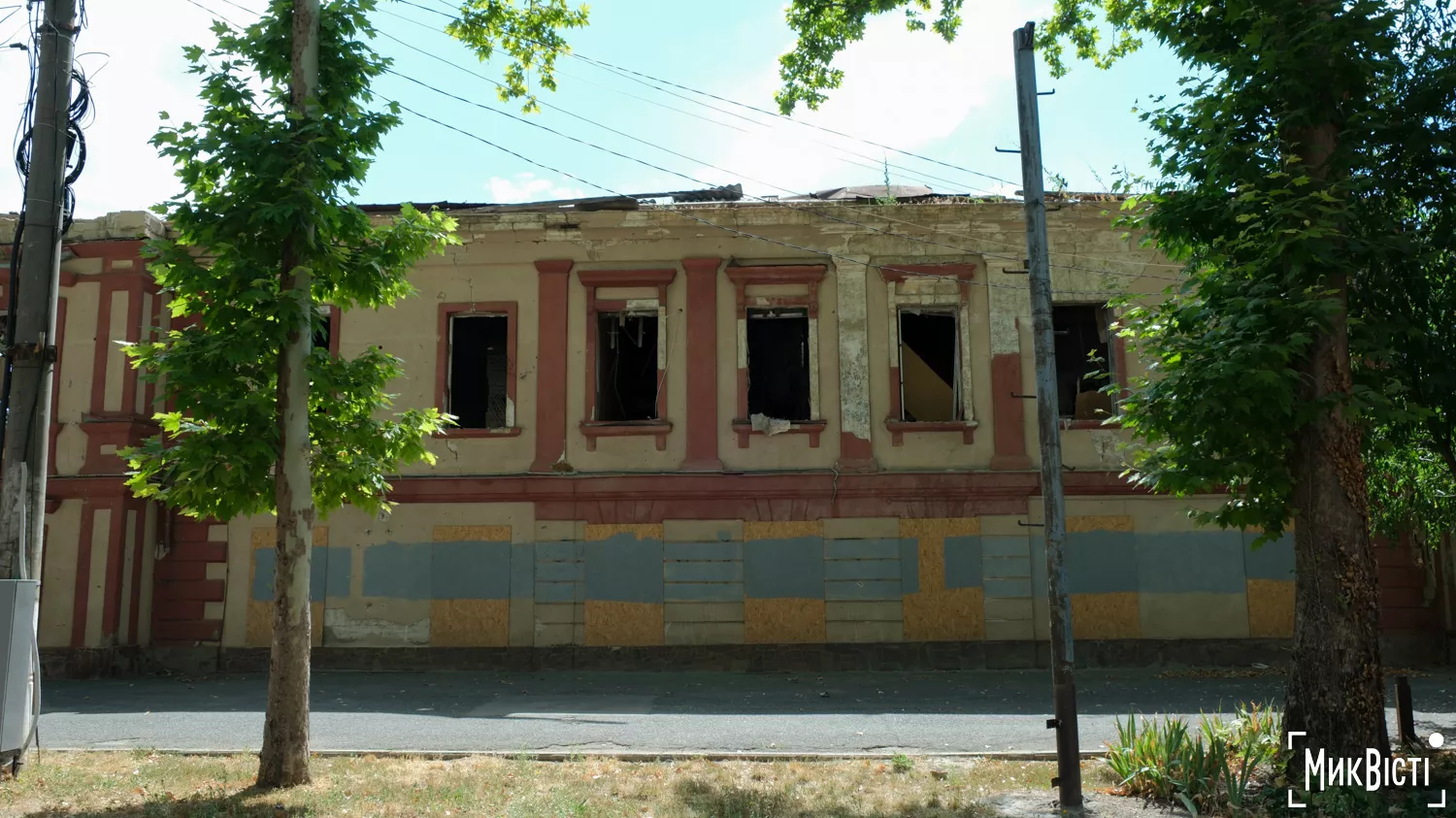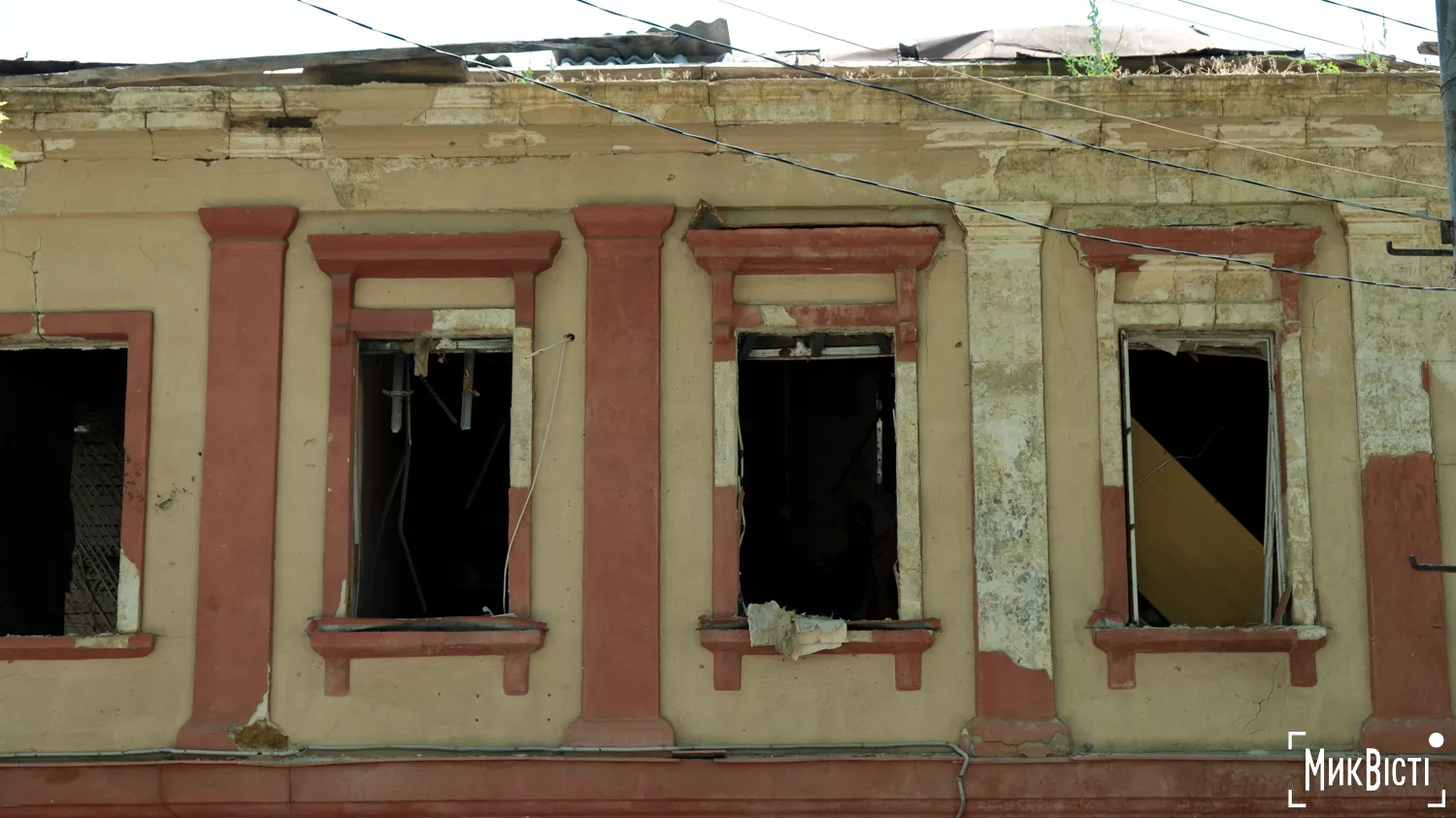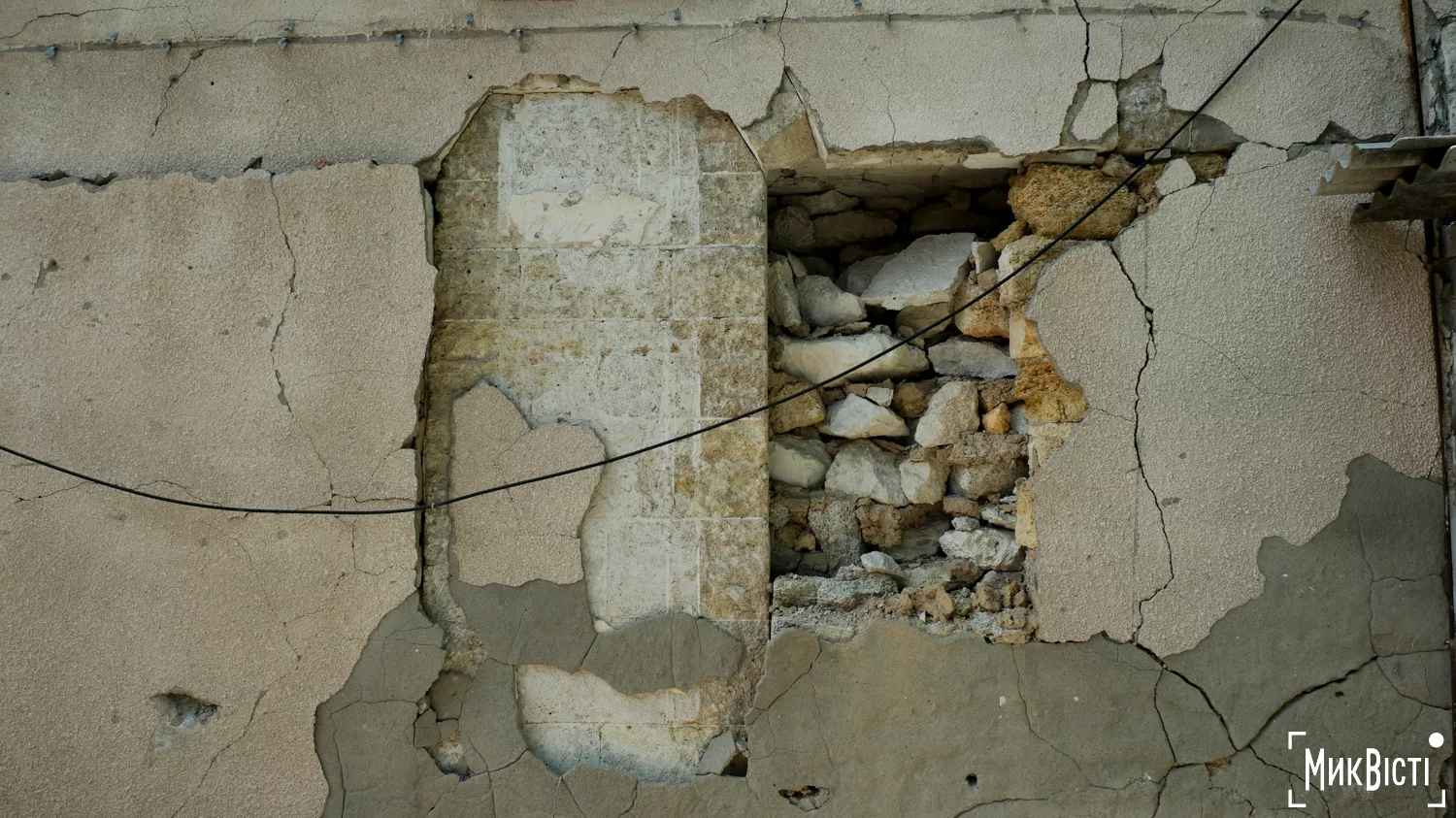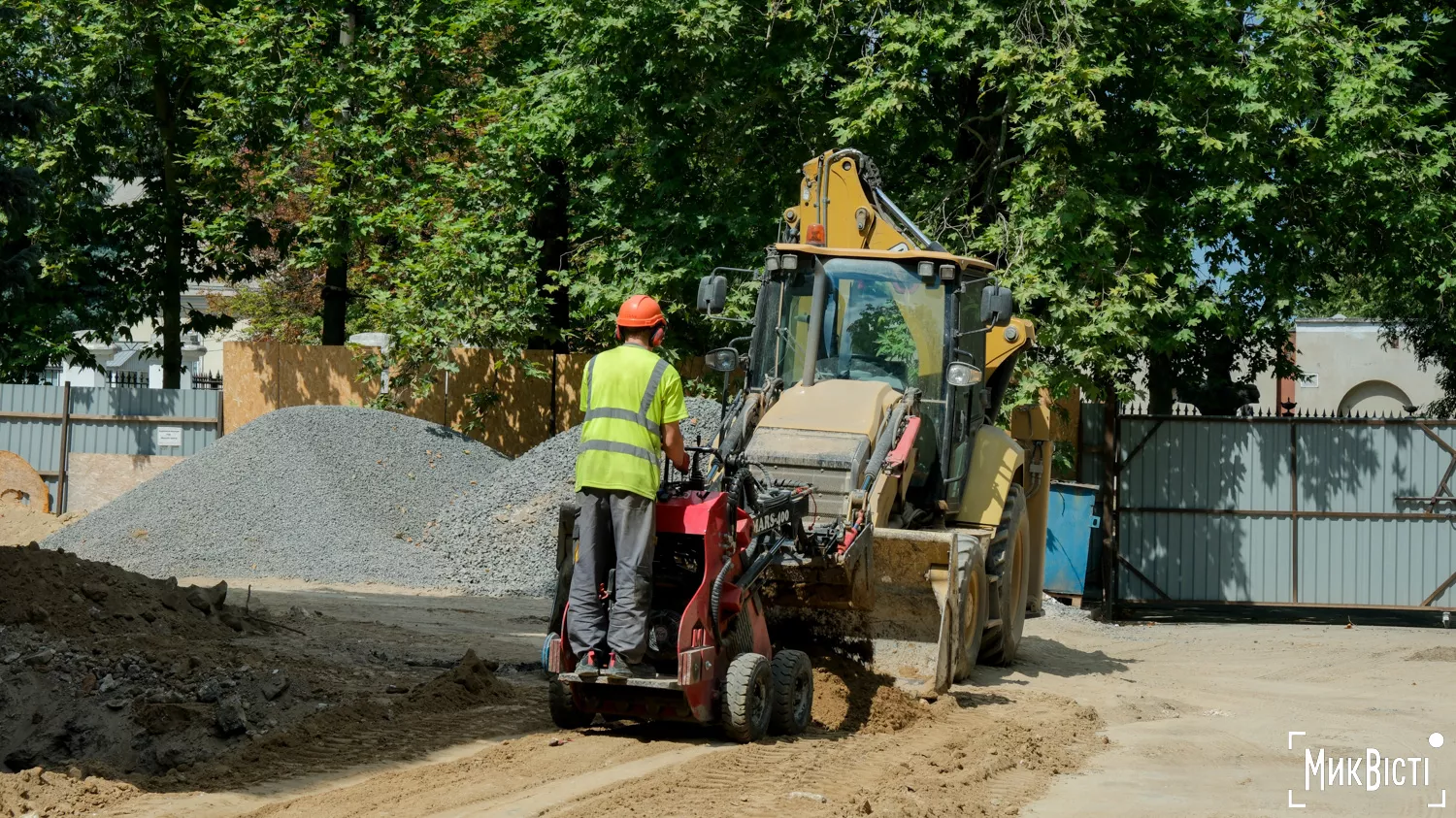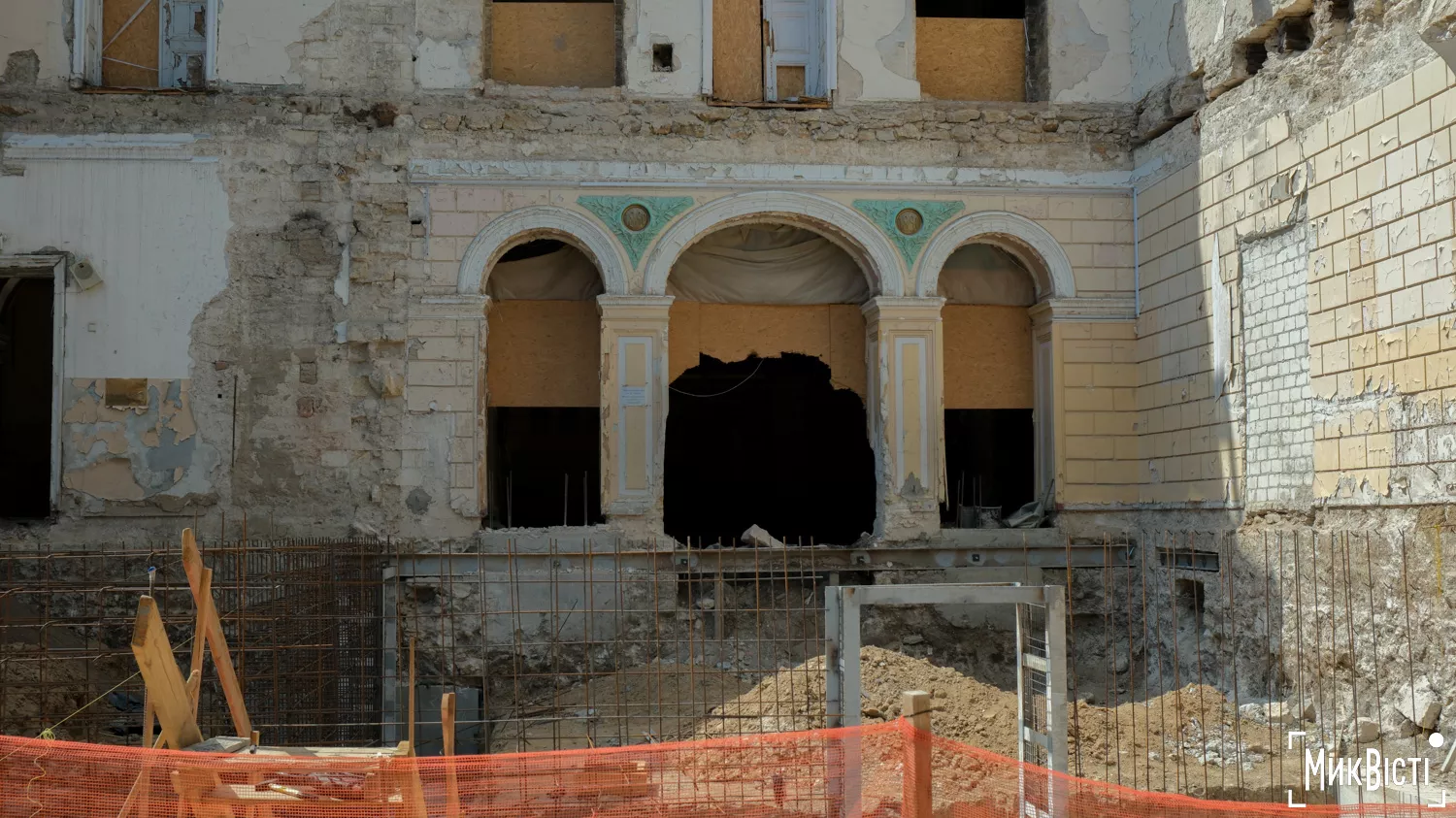What architectural monuments did Russia destroy in Mykolaiv, and what will happen to them?
- News of Mykolaiv
-
•
-

- Yuliia Boichenko
-
•
-
8:23, 30 July, 2025
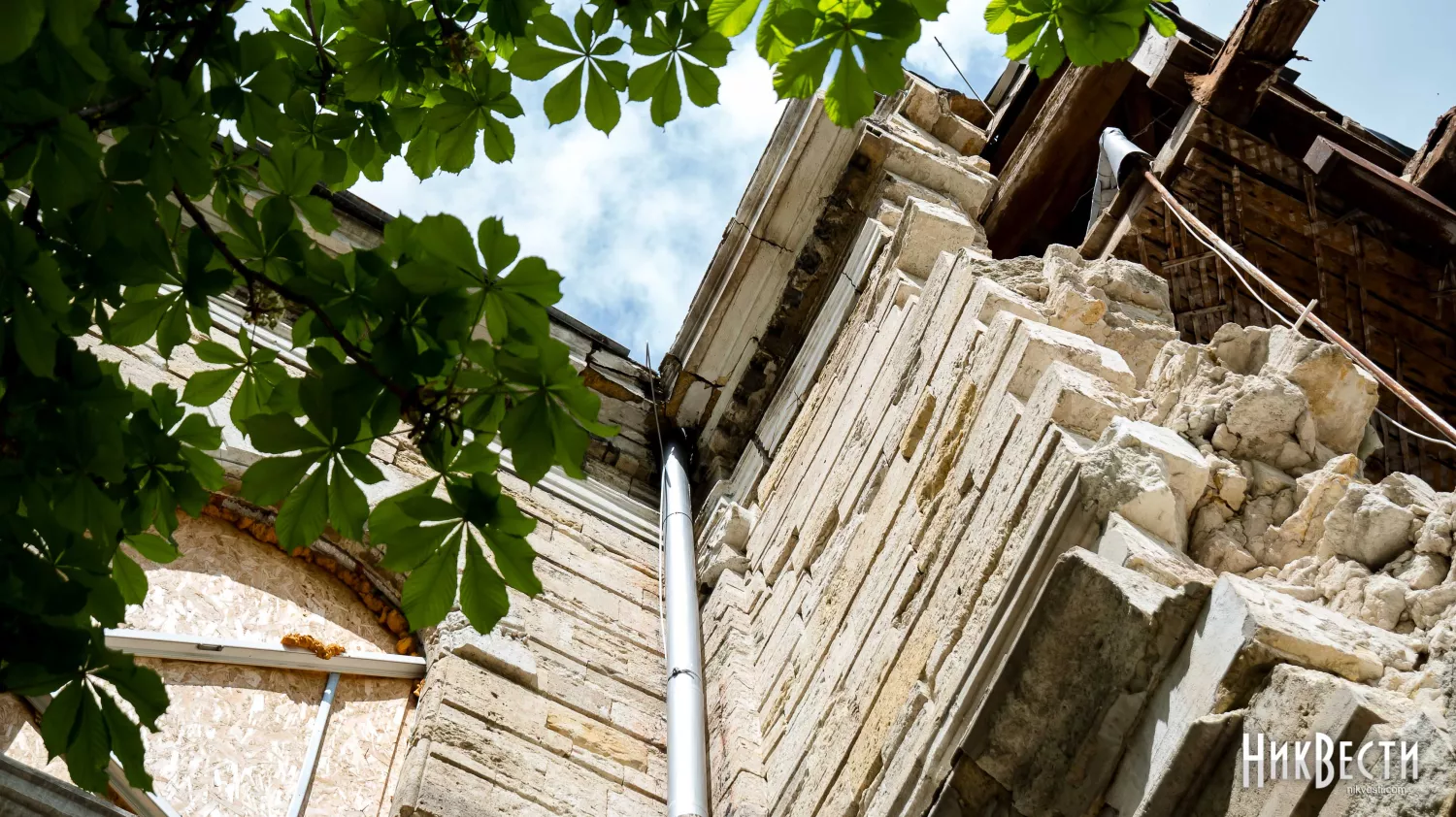 The destroyed building of the Mykola Arkas Gymnasium in Mykolaiv, 23 April 2024, archive photo NikVesti
The destroyed building of the Mykola Arkas Gymnasium in Mykolaiv, 23 April 2024, archive photo NikVestiSince the first days of the war, Russia has been deliberately destroying Ukrainian cultural heritage. Architectural monuments, unique old houses, and churches have been reduced to ruins by Russian missile strikes. During this time, the enemy has destroyed more than 3,500 cultural heritage sites and infrastructure in Ukraine. This is approximately the same amount as if the Russians had destroyed three such sites every day from the beginning of the full-scale war to the present day.
The Mykolaiv region was one of the regions where the enemy destroyed the most cultural heritage sites and cultural infrastructure. In Mykolaiv, this number totalled 77 sites. The extent of their destruction varies: from broken windows to significant collapses. But there are also historic buildings that are now dilapidated as a result of Russian shelling.
NikVesti found out what is happening to the destroyed architectural monuments of Mykolaiv and whether they have a chance of being restored.
What cultural sites in Mykolaiv are being destroyed by Russia?
First of all, it is worth distinguishing between the concepts of a cultural heritage monument and cultural infrastructure. Although both categories have the word «culture» in their names, they are different in content. While monuments are about preservation and heritage, infrastructure is about activity and modern cultural interaction. To take Mykolaiv as an example: the building of the Monte Theatre, where prominent cultural and artistic figures performed, is a cultural heritage site. It is now the Mykolaiv Academic Artistic Drama Theatre. A Russian missile hit the theatre building in September 2022. After that, several theatres from different regions of Ukraine helped to preserve the building for the winter, and in the spring of 2023, with donor and grant assistance, the regional budget, repair work began on the site and the first floor of the theatre. And today the theatre building has been restored.
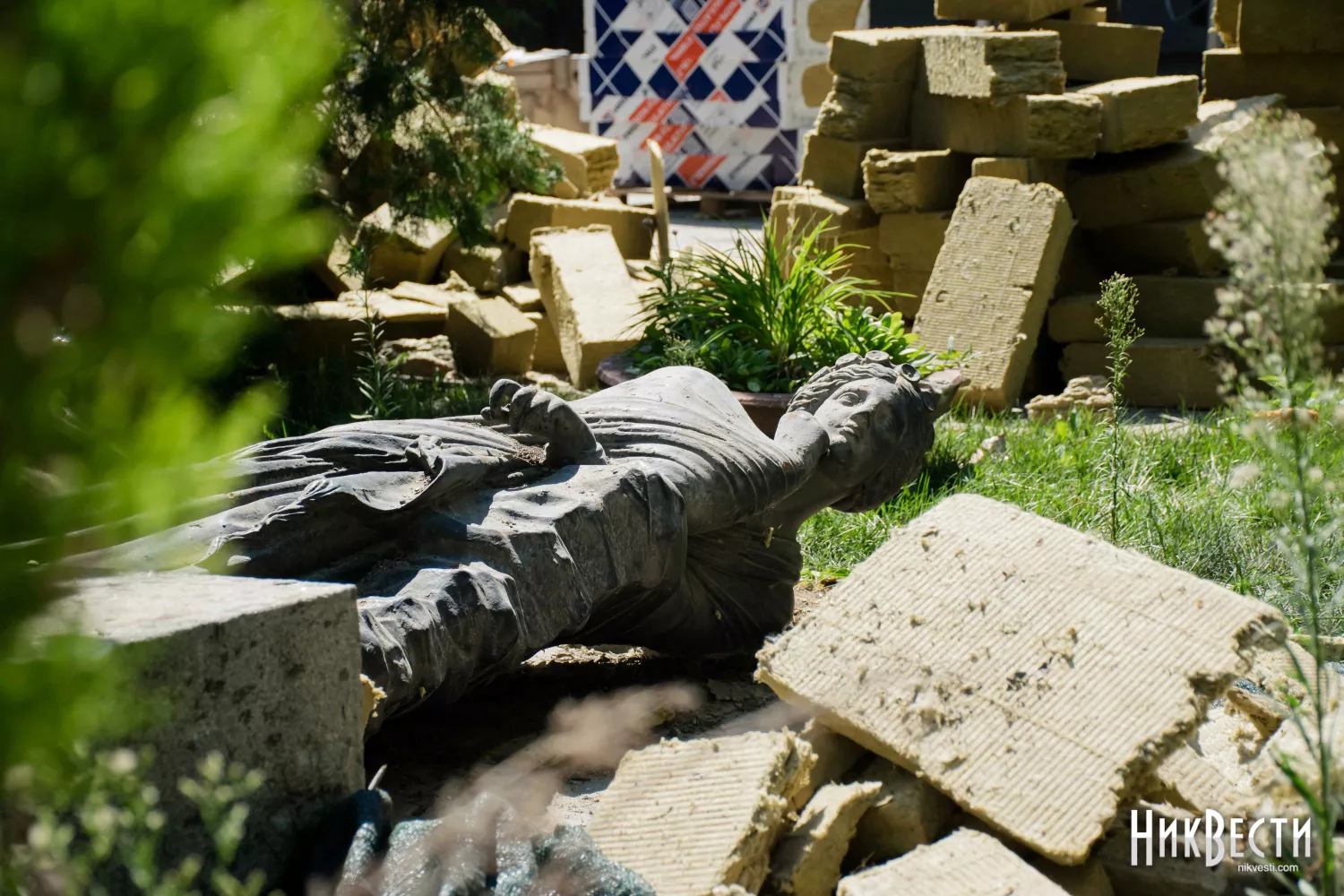 Sculpture on the territory of the theatre after the Russian shelling in autumn 2022, archive photo NikVesti
Sculpture on the territory of the theatre after the Russian shelling in autumn 2022, archive photo NikVestiAnd the Palace of Culture «Korabelnyi» is an example of a cultural infrastructure facility. Before the full-scale invasion began, the Palace of Culture was one of the main gems of the Korabelnyi district — in fact, it was the only cultural institution in a large area of the city. It was visited by more than 500 people aged 4 to 80.
In the summer of 2022, a Russian cruise missile bombed the stage of the Palace of Culture. Miraculously, the central part of the building was not damaged either by the strike itself or by the blast wave. And in September 2023, the institution opened its doors to visitors, having operated for only 5 months before the fire that put an end to the Palace of Culture. Although the inspection of the rocket-damaged building of the Palace of Culture «Korabelnyi» showed that it can be restored without complete dismantling, the City Council's Capital Construction Department previously reported in a comment to NikVesti.
The Ministry of Culture and Information Policy has estimated that between 24 February 2022 and 24 July 2025, 37 cultural heritage sites and 40 cultural infrastructure sites in Mykolaiv were damaged or destroyed.
The Ministry of Culture was unable to respond to the information request NikVesti regarding the amount of damage these sites in Mykolaiv suffered. However, it is known that the reconstruction of such facilities across Ukraine would require approximately $100 billion. However, in reality, this is something that cannot be simply restored or calculated in square metres, tonnes of concrete, bricks or glass, said Halyna Hryhorenko, Deputy Minister of Culture and Information Policy of Ukraine.
In general, among «cultural» objects, Mykolaiv suffered the most: Kudriavtsev's dacha, Arkas Gymnasium, Menkini House, the historic building of the «Admiralty», and the building of the Kropyvnytskyi Library Branch №17 was completely destroyed.
Menkini's house has not yet been «preserved»?
One of these architectural monuments is the Menkini House, a building of the regional centre of folk art located on Admiralska Street, opposite the destroyed hotel «Inhul». In 2022, it was added to the state register of architectural monuments. In Soviet times, it was the home of the Pioneers, where the songwriter and author of the Moscow anthem Mark Lysianskyi began his career. Since the beginning of the full-scale war, the building has been damaged several times by blast waves caused by Russian strikes. The building suffered the greatest damage in July 2023 during a Russian missile attack.
«It is valuable as a monument because it has not so much external as internal decoration, which is typical for tenement houses of the late 19th and early 20th centuries,» Svitlana Hladun, head of the Mykolaiv Cultural Heritage Protection Department, explained in a comment to NikVesti.
The building is now in a dilapidated state. The first priority is to carry out emergency repairs and «preserve the building to prevent further destruction and deterioration of the monument, explained Hladun. This, she added, will require approximately 13 million hryvnias.
The non-governmental organisation «The Agency for Cultural Resilience», has agreed to provide money for priority emergency work — $30,000 (about 1.2 million hryvnias).
«The amount is not very large, but it will allow us to preserve, cover and protect the building from further destruction. In the meantime, we will work on finding funds for further work, for restoration and so on,» added Svitlana Hladun.
The amount of money needed for the full restoration of the historical monument cannot yet be named. This will become clearer only after the development of a conservation project, explained the head of the Mykolaiv Cultural Heritage Protection Department.
«Now the architect, who was invited by the «Cultural Sustainability Agency», is working on a project for emergency conservation work. The customer will be the balance holder — «Tsentralnyi» (municipal housing and maintenance enterprise — note). When the project is developed, we will be able to say more specifically what work will be carried out on this building. There is a very complex degree of damage,» said Svitlana Hladun.
From shelling to court: what is happening to Kudriavtsev's Dacha now?
In August 2022, during another shelling of Mykolaiv, one of the six buildings of «Kudriavtsev's Dacha», which is located near the yacht club, was damaged. This building is an architectural monument of local importance and is included in the State Register of Immovable Monuments of Ukraine. This complex was built in the 19th century as a family estate of a wealthy landowner and philanthropist Dmytro Rostyslavovych Kudriavtsev, but after the revolution, it became a sanatorium for workers of the 61 Communards Shipyard (now the Mykolaiv Shipyard).
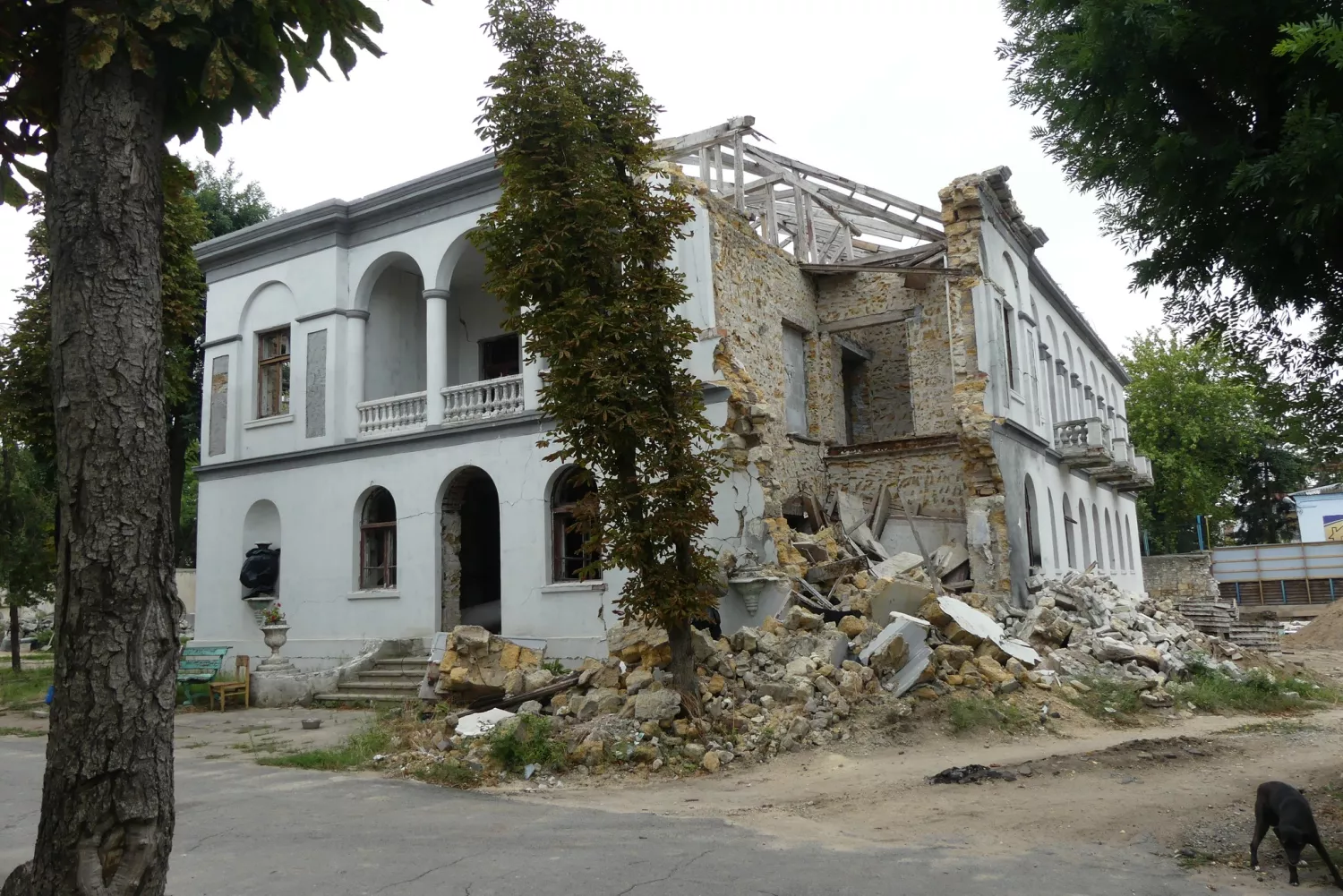 The «building of Kudryavtsev's Dacha» after the Russian strike in August 2022. Photo by the Mykolaiv Department of Cultural Heritage Protection
The «building of Kudryavtsev's Dacha» after the Russian strike in August 2022. Photo by the Mykolaiv Department of Cultural Heritage ProtectionEven before the full-scale war, members of the city council leased the territory of «Dacha Kudryavtseva» to the «Restro Club» restaurant.
At the same time, the tenant began restoring the abandoned buildings, but the city's cultural heritage department reported that the historic complex was being reconstructed without the appropriate approval. And after the Russian shelling in 2022, the owner of the territory dismantled the building. After that, the Department of Culture of the Mykolaiv Regional State Administration said that they had not granted permission to dismantle the building.
«We did not approve this, it is impossible. The Department of Culture of the Regional State Administration did not approve any work on dismantling the damaged object,» Olha Skarlat, head of the cultural heritage protection sector of the Department of Culture, Nationalities and Religions of the Mykolaiv Regional State Administration, told NikVesti.
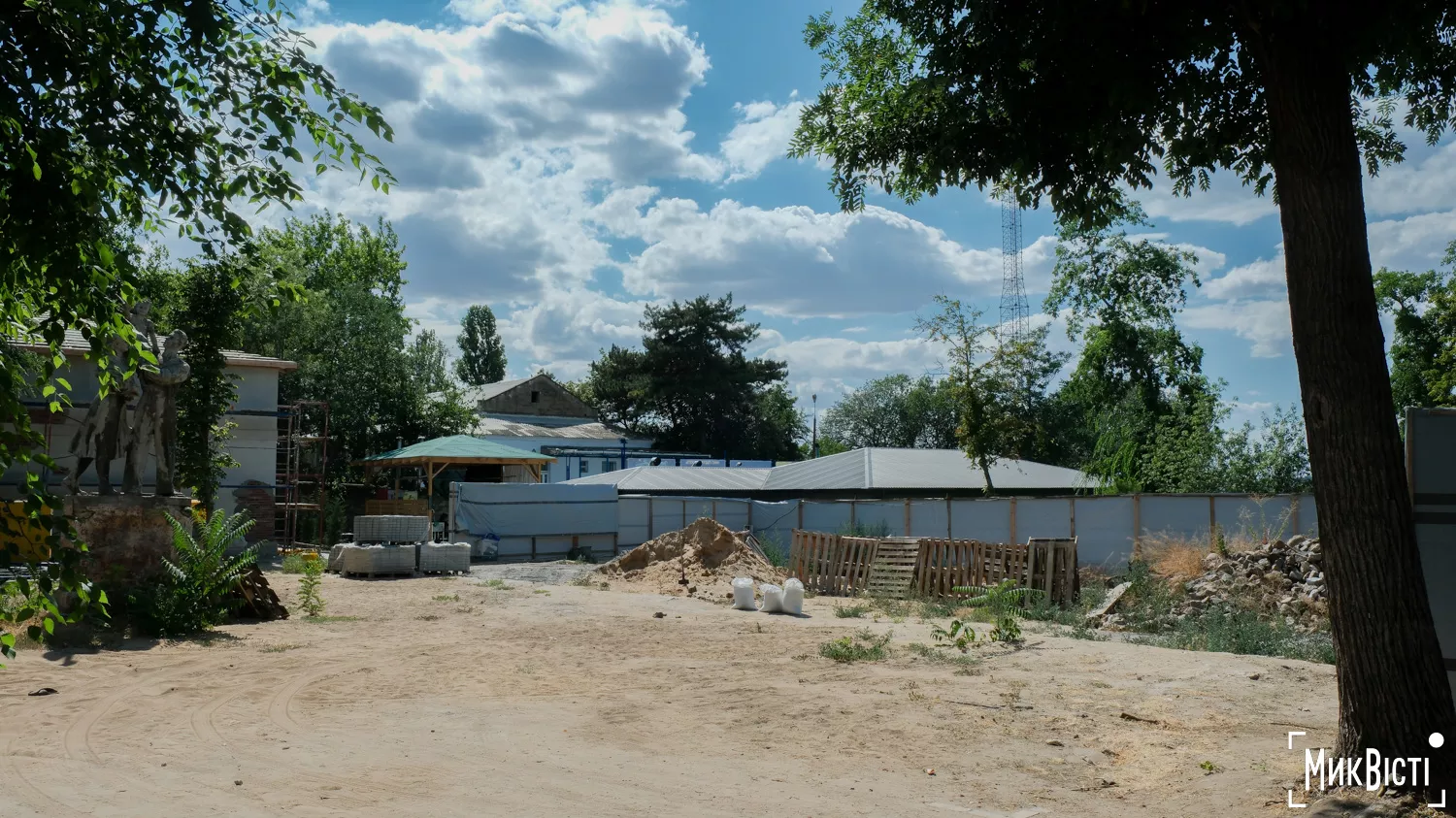 The area where the buildings of the historical complex «Kudriavtsev's Dacha» used to be, July 2025. Photo: NikVesti
The area where the buildings of the historical complex «Kudriavtsev's Dacha» used to be, July 2025. Photo: NikVestiAt the same time, the regional prosecutor's office filed a lawsuit to oblige the company «Restro Club» to restore the destroyed historic building of the «Kudriavtsev's Dacha» complex. And later, he ordered the owner to restore the building at his own expense, the Mykolaiv District Prosecutor's Office told NikVesti.
«The Mykolaiv District Administrative Court agreed with the prosecutor's arguments that such actions by the owner of the monument grossly violated the rights of citizens to a proper cultural environment, as well as the requirements of Articles 24 and 27 of the Law of Ukraine «On the Protection of Cultural Heritage», the prosecutor's office explained.
In total, the dismantling of «Kudriavtsev's Dacha» could cost the owner up to 7 million hryvnias in fines. The Mykolaiv District Police Department has launched an investigation into the illegal dismantling of a part of the historical monument. The case was opened under Part 2 of Article 298 of the Criminal Code of Ukraine (Illegal search operations at an archaeological heritage site, destruction, destruction or damage to cultural heritage sites). As of mid-June, the investigation was ongoing, the police told NikVesti.
Will the Arkas Gymnasium be restored in its authentic form?
The historic building of the Mykola Arkas Lyceum was one of the destroyed cultural heritage sites that is currently being restored. It was destroyed in November 2022 during the bombing of Mykolaiv by Russian troops. As a result of the shelling, a part of the wall fell down, the interior of the school classrooms opened up, and the roof over the facade was damaged.
Its reconstruction is currently being funded by the Danish government, and the work is being overseen by the United Nations Office for Project Services (UNOPS). In total, the historic school building will be rebuilt in three stages:
- Emergency works: dismantling of the building's emergency structures.
- Stabilisation works: major repairs to the roof and walls; restoration of the facade, but without restoring ornaments and other finishing elements; preparation for the construction of a shelter.
- Resumption of the educational process: renovation of the lyceum premises and arrangement of the shelter. The development of project documentation for interior works is still underway.
Work is currently underway to stabilise the building and create space for the shelter, UNOPS communications specialist Mykhailo Turyanytsia explained in a comment to NikVesti.
«The contractor has dismantled the structures that were in disrepair and is replacing them with new elements. The roof and walls are being overhauled,» he added.
UNOPS clarified that they will not restore the decorative elements of the facade, at least at this stage of the work. They are currently negotiating with the Danish government on the possibility of financing such work.
«When the stabilisation is complete, the building will be structurally sound, but the decorative elements of the façade will not be restored. We plan to reach this stage by the end of the year.
At the same time, we are negotiating with the Danish government to allocate additional funds to enable us to carry out work beyond the scope of stabilisation. This will include interior and exterior work, but we cannot confirm whether the additional budget will cover the full restoration of the building's authentic appearance. We will make an announcement as soon as we reach a final agreement,» explained Mykhailo Turianytsia.
Nevertheless, UNOPS aims to restore the original appearance of the facade of the historic Arkas Gymnasium building, as it was before the missile hit.
«We would like to assure our readers that our work is carried out in full compliance with the building's design, so the possibility of restoring its original appearance remains. This is a goal we share with the city authorities and the people of Mykolaiv,» he added.
Currently, the authorities do not pay enough attention to the restoration of destroyed cultural heritage sites and cultural infrastructure in Mykolaiv. Their focus is more on the restoration of critical infrastructure and housing, which is quite logical for a country at war. That is why international partners are involved in this process. An example is Denmark, which is restoring the historic Arkas Gymnasium building. However, this is still an exception rather than evidence of the government's well-coordinated work in preserving cultural heritage during the war.
Yuliia Boichenko, NikVesti

This material was produced as part of the "Improving Ukrainian Media Resilience" project, implemented by the Fondation Hirondelle (Switzerland) and IRMI, the Institute for Regional Media and Information (Ukraine). The project is funded by Swiss Solidarity.

Чому ви читаєте «МикВісті»? Яка наша діяльність найбільш важлива для вас? Та чи хотіли б ви стати частиною спільноти читачів? Пройдіть опитування, це анонімно і займе 5 хвилин вашого часу


